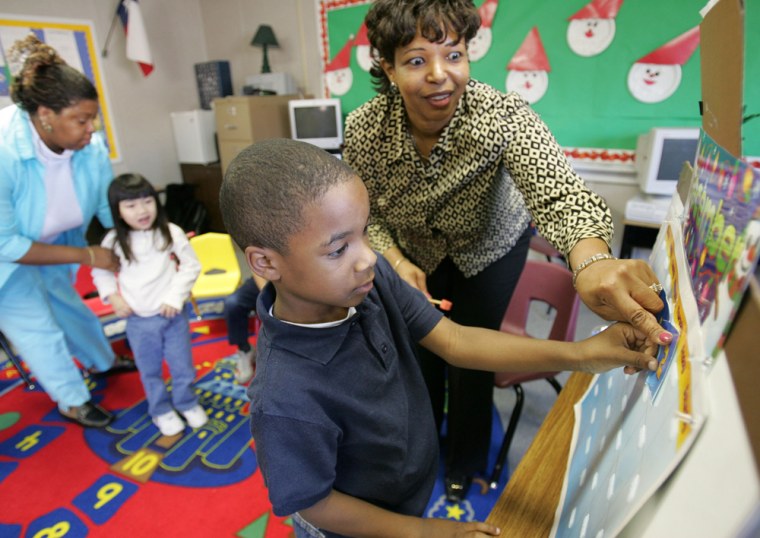Some preschool teachers would do anything to keep their students quiet, but Phyllis Wilson’s classroom is designed to get them talking.
Her seven preschoolers have a variety of disabilities that leave them with low verbal skills. So she’s worked with Houston school district speech-language pathologist Johanna Olson to create an environment that teases out their voices.
Unfortunately, school speech-language pathologists like Olson are in short supply nationwide, leaving many teachers struggling alone to meet students’ speech needs.
The U.S. Bureau of Labor Statistics projects that the nation will need about 120,000 speech-language pathologists by 2012 to meet increasing demand and replace retiring workers. In 2002, about 94,000 speech-language pathologists were working nationwide; some 8,000 of those were licensed in Texas.
No one tracks how many now work in the state’s schools, though Texas Speech-Language-Hearing Association President Lynn Flahive estimates it’s about half. An association survey of 282 of the state’s 1,037 districts found 60 percent were forced to fill vacancies with expensive contract workers or unlicensed assistants.
More professionals needed
Demand for speech-language pathologists has grown as more children have been diagnosed as needing speech therapy. That’s due in part to improvements in diagnosing speech impairments and higher rates of autism, which along with Down syndrome and cerebral palsy causes most major speech problems.
But universities are having trouble recruiting and graduating enough students, who need master’s degrees to be fully certified in most states.
“Basically there just aren’t enough young people deciding speech-language pathology is the profession they want to pursue,” said Cherry Wright, chairwoman of the Texas association’s task force on public school job vacancies.
Schools also lose job candidates to more glamorous and higher-paying jobs at hospitals and rehabilitation centers, Wright said.
The federal Individuals with Disabilities Education Act requires school districts to have enough speech-language pathologists to meet the needs of every special education student requiring speech therapy.
If those services can’t be provided during the day, districts must try to arrange sessions outside school or send the student to a private therapist.
Contract workers
One district struggling to meet speech pathologist needs is in Victoria. The district, about 120 miles southwest of Houston, could not replace the five pathologists who left after the last school year. Three retired and two took higher-paying jobs at other districts.
“We can’t seem to entice the SLPs to come to the district and keep them here,” said Barbara Mabry, Victoria’s director of special services.
Victoria increased the annual stipend it offers speech-language pathologists on top of their salary from $3,500 to $5,000. Still unable to find qualified candidates, the district had to hire contract workers at about $50 per hour, about $20 more per hour than what staff pathologists make.
Many districts across the country turn to contract therapy companies. Tampa, Fla.-based Progressus Therapy Inc. serves 120 districts in about 15 states, including Texas.
Progressus President John Hoey said it’s easier for his company to recruit speech-language pathologists because it can offer jobs all over the country.
“It’s very difficult for a school district in a very specific location to go out and be effective recruiting nationally,” he said. “Every single day we are in the market trying to find therapists around the country. A school district can’t do that.”
